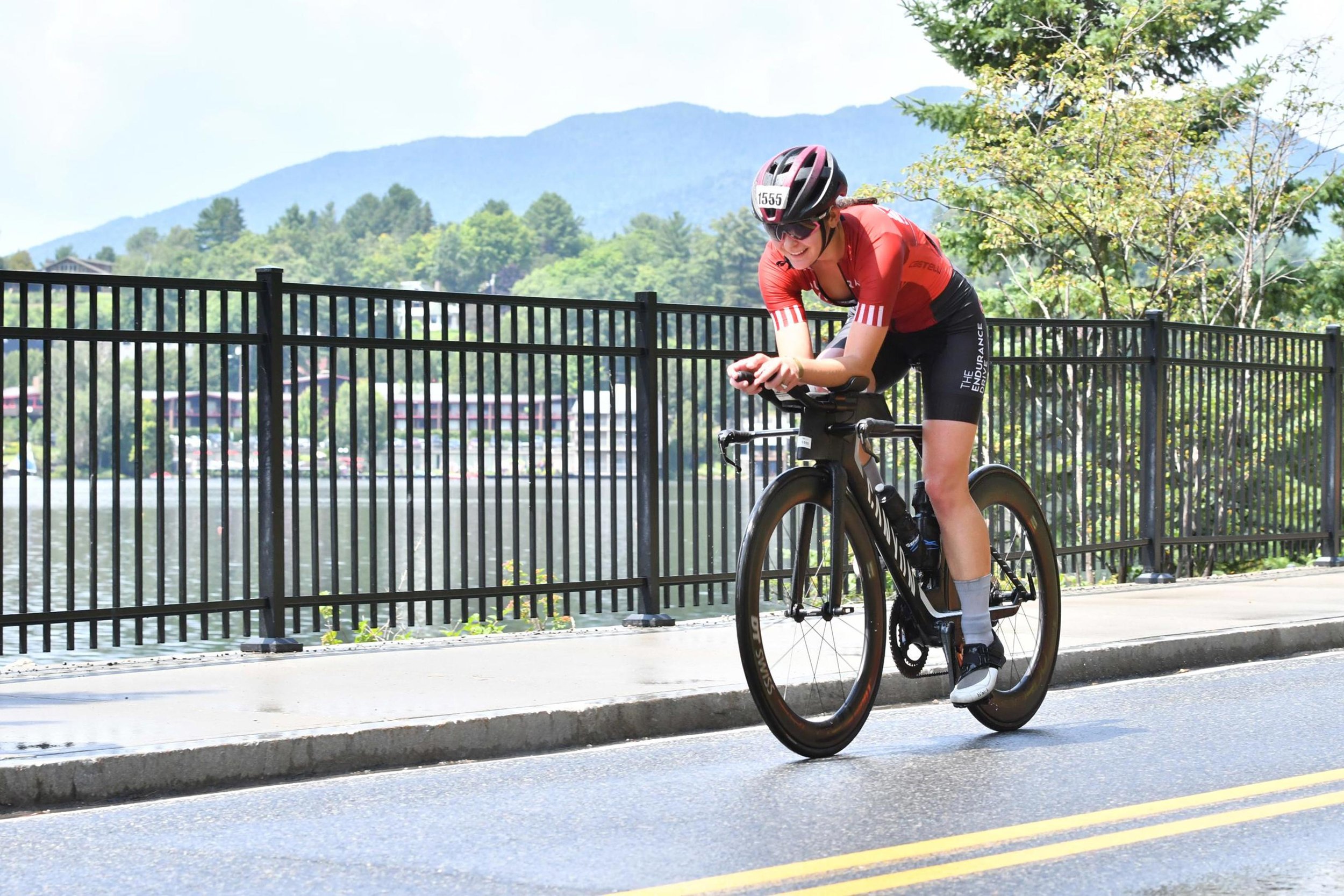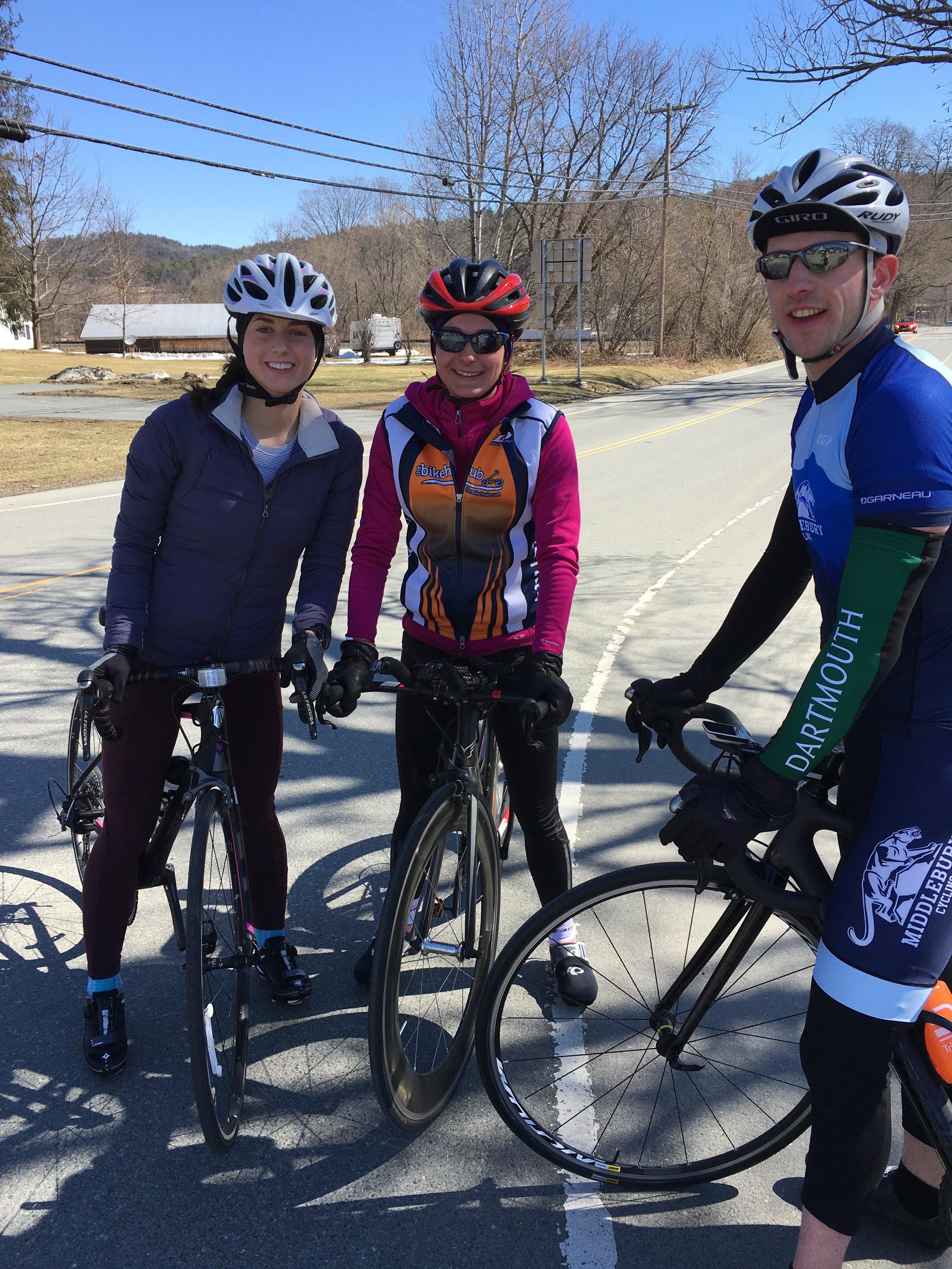Cold spring weather got you down? Except for the skiers out there, most of us in New England and Canada have reached our cold limit. It’s not really “spring,” it’s “less winter.” And this awkward “less winter” season could be killing your summer “A” race. Despite the clickbait-like headline, cold spring weather is a legitimate concern.
From base to build
Most long distance triathletes (and ultrarunners) are now getting out for supporting rides during the week and long rides on the weekends. Big “A” races like IRONMAN Lake Placid are 10 weeks away, with IRONMAN Mont-Tremblant not that far behind. Athletes are now moving from their base period to their build period. A build period training strategy involves dialing in to what we call “race specificity.” In other words, you start to train as you will race.
The build period includes long training rides with race intervals where you work on race-specific intensities to train your aerobic and muscular endurance. But what you are also trying to train is your environmental durability. Environment durability can be thought of like this: go out on your lawn with a handful of Gatorade bottles and gels, hang out there for the day, and see how well you feel after 8+ hours in the sun. Then try to run your best marathon. If you work inside, especially in an air-conditioned office, your environmental durability most likely needs improvement. The most common comment after an Ironman or Ironman 70.3 is, “It was so hot out there!” Guess what? It’s hot out there nearly every day. You’re just not used to spending the entire day outside.
Humans are well-oiled machines. We adapt well and quickly to our environments. But when spring temperatures are cold, we lack that warm, challenging environment that we need to train our bodies to withstand the heat, stay properly hydrated, and manage thermoregulation (i.e., staying cool at race pace). Cold weather means less opportunities to gain the adaptations that are required for summer “A” races.
How do cold springs affect race day?
We had another cold spring a few years ago in New England. A few of The Endurance Drive crew were racing IRONMAN Syracuse 70.3 in mid-June. The weather stayed cool through the spring except for one very hot and humid day in May. I had 4 x 20’ race watt intervals scheduled. I did one interval and quit the workout. It was simply too hot and humid, and I had a total of zero days to acclimate to the conditions. The temperatures dropped again after that day and didn’t rise until the race.
As luck would have it, race day brought temperatures in the upper 80s and low 90s, and the humidity and pollen were through the roof. What happened? Most of us cratered on the run. During the first mile, one of my friends quit the race. He was an overall win contender but the heat was just too much. I tried to run my goal 7:45 race pace but looked down at my watch after the first mile to see a 9:45 pace and a very high heart rate -- and I was going downhill! I only stayed in the race because I was fascinated with what type of carnage the extreme hot and humid environment would bring upon the racers. The entire run played out in slow motion.
Lessons learned
We were all in the same boat that day. Without an impromptu trip to Florida during race week, it would have been tough for athletes from the New England, New York, or Canada areas to prepare for that early summer heat and humidity. The point is, environmental durability matters a lot, and it can’t be properly trained on 40-50F temperature rides. No matter how fit you get (and big fitness is the best hedge against everything that can happen during a race), training for the heat is a major success factor in your “A” race.
So what practical steps can you take to train for the heat when Mother Nature treats us to another mid-May snow storm?
If your health club or gym has a sauna, it’s a great resource to prepare your body to manage heat and gain additional health benefits. A sauna protocol is outlined here: https://www.amrapnutrition.com/blogs/posts/sauna-a-simple-proven-sports-performance-enhancer
A simple and effective hot bath after your workout will also raise your core temperature. Hot bath protocol article: http://www.mysportscience.com/single-post/2016/06/15/Hot-bath-and-performance-Practical-guidelines
You can head back to your pain cave, crank up the heat and enjoy more Zwift.
If you have an early southern “A” race and are coming from a cold environment, it’s ideal to have 2-3 race plans based on the environmental conditions (and other race day factors). Your Plan A could hinge on moderate weather. Having a Plan B and Plan C that are ready for less-than-ideal racing conditions can help you adjust your goals based on the environment.
Or you can wait it out; it will get hot and humid soon - I promise! (And then try to resist the urge of a true New Englander to complain about that, too!) Don’t quit during those first few hot workouts, stay hydrated, and aim to get heat-adapted to do well at your summer “A” race. -Jim



